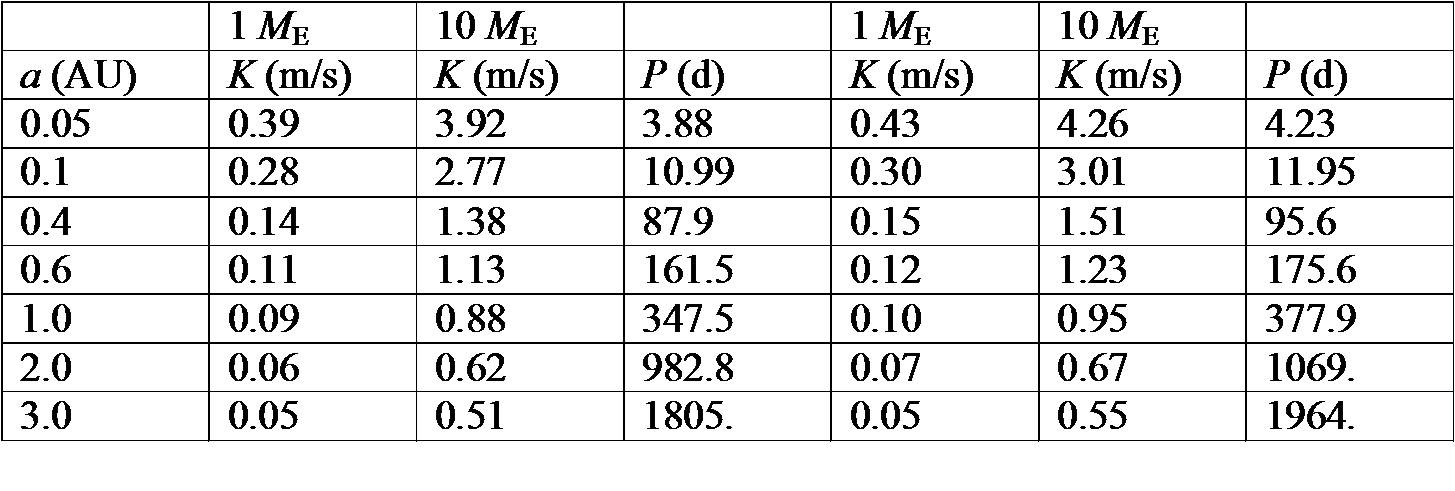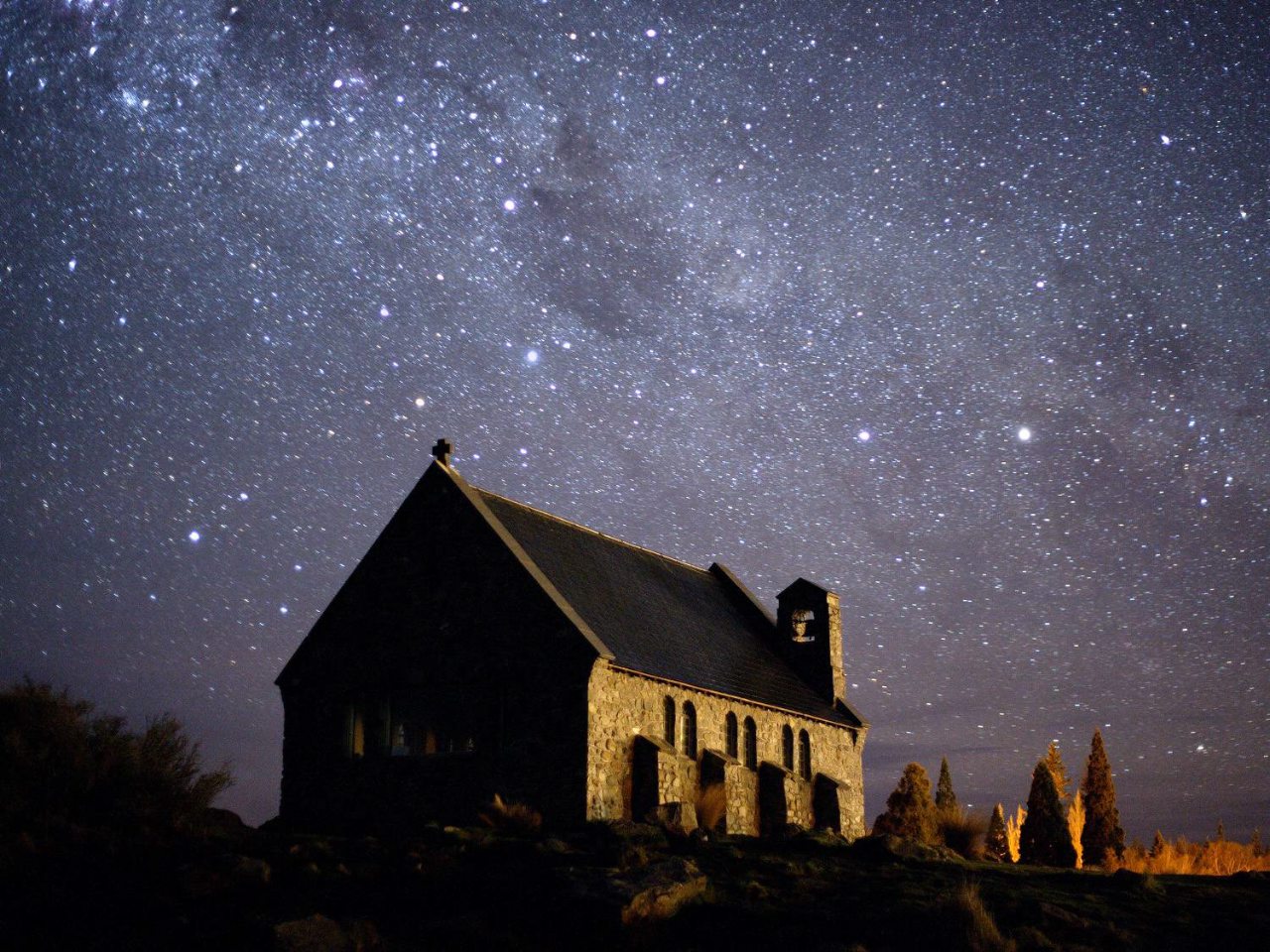Purpose of the project
The goals of the Mt John alpha Centauri project are to find evidence for Earth-mass planets in the habitable zone of alpha Centauri, orbiting either alpha Centauri A or alpha Centauri B. We are using the successful Doppler technique for the detection of extrasolar planets. The principle of the method is the detection of small radial velocity variations of the host star that result from the reflex motion induced by an unseen orbiting planet close to the star.
For α Centauri, which comprises two Sun-like stars in a clearly resolved visual binary, the aim of our project is to make the first detection of Earth-mass planets orbiting either star. We will especially be seeking Earth-mass or super-Earth planets in their habitable zones where water is liquid. It is already known that Jupiter-mass planets are absent in α Centauri in S-type orbits (Endl et al. 2001).
The stability of planetary orbits in α Centauri was analysed by Wiegert & Holman (1997) and stable coplanar orbits found to be possible out to about 3 A.U. around each of the stars.
Although Earth-mass planets in their habitable zones (~1.2 A.U. for A and ~0.7 A.U. for B) only induce RV perturbations of about 0.1 m/s in the respective stars, our simulations show that these signals in RV are clearly detectable in 2 or 3 years if the precision of one observation is ~3 m/s and about 10,000 spectra per year of each star are obtained.
For super-Earths at 10 ME, detection is much easier and should be revealed with a few hundred spectra.
We are confident that the α Cen project is at the forefront of exoplanet research and that finding an Earth analogue around our nearest star would be like finding the holy grail in this research field. It is also extremely interesting for the public.
In 2012 Xavier Dumusque et al in Geneva announced the possible detection of a 1.13 Earth-mass planet orbiting alpha CenB in a 3.2-day circular orbit. This detection is right at the limit of their 459 data points obtained from the HARPS spectrograph at ESO's La Silla observatory in Chile (Dumusque et al, 2012). In view of this claim, the analysis of our data is all the more interesting.
Observations
All the observations for the alpha Centauri project are being made at the 1-m McLellan telescope at Mt John University Observatory, Lake Tekapo, in the central South Island of New Zealand.The telescope receives starlight and sends it via an optical fibre of length 25 m to the Hercules high resolution echelle spectrograph (Hearnshaw et al., 2002) where the light is dispersed and a spectrum is recorded on a 4096 by 4096 pixel Spectral Instruments CCD camera.
Fortunately Mt John and the Hercules spectrograph are in a unique position to handle such a project. We have demonstrated our ability to obtain the necessary data quality and quantity, including observations all year (impossible at any other observatory as a result of Mt John's southerly latitude).
Having complete phase sampling with data collected all year is essential for this project.
As at 14 Jan 2013 we have observed 24,588 spectra of alpha Centauri A and 17,446 spectra of alpha Centauri B.
Computer modelling by Guedes et al.(2008)
Can planets form in the α Cen system?Results from planet formation simulations by Guedes et al. (2008) for α CenB showed that planets can form from lunar mass planetesimals after about 200 Myr.
All simulations yielded 1 to 4 Earth-mass planets of which 42% lie inside the star's habitable zone. Starting conditions: about 600 lunar-mass bodies in a disk with 1/a surface density.
The challenge of detecting Earth-mass planets
Earth-mass planets require velocity precision of ~ 1 m/s.The table gives velocity amplitudes (in m/s) of α Cen A and B caused by respectively 1 ME and 10 ME planets in orbits of different size, a.
alpha Centauri A alpha Centauri B

Note that alpha Centauri B is about 20 per cent less massive than alpha Centauri A. This leads to about a 10 per cent larger velocity variation for a given mass planet in an orbit of a given size, as the velocity wobble of the planet goes inversely as the square root of the host star's mass.
Why observe α Centauri from Mt John Observatory New Zealand?
- We have a high resolution spectrograph able to deliver ~1 m/s precision.
- We have a 1-m telescope available for an intensive observing program over several years.
- We can observe α Centauri all year, even in November and December when α Cen passes through lower culmination (altitude ~ 15°).

Funding and support
The Mt John alpha Centauri project is supported by the Marsden Fund administered by the Royal Society of New Zealand, for the three-year period 1 Jan 2011 to 31 Dec 2013. John Hearnshaw is the contact PI for the Marsden grant. In addition, the Australian Research Council is funding part of the project by supporting the observing costs. This is funded through Rob Wittenmyer in a subcontract to the University of Canterbury.References Papers
Endl, M., Kürster, M., Els, S., Hatzes, A.P. and Cochran, W.D., The α Centauri system: Limits for planetary companions. Astron. & Astrophys. 374, 675-681 (2001)Wiegert, P.A. and Holman, M.J., The stability of planets in the alpha Centauri system. Astron. J.,113, 1445-1450 (1997)
Hearnshaw, J.B., Barnes, S.I., Kershaw, G.M., Frost, N., Graham, G., Ritchie, R. and Nankivell,G.R., The Hercules échelle spectrograph at Mt John. Experimental Astron., 13, 59-76 (2002)
Guedes, J.M., Rivera, E.J., Davis, E., Laughlin, G., Quintana, E.V., and Fischer, D.A.,Formation and detectability of terrestrial planets around α Centauri B. Astrophys. J., 679, 1582-87(2008)
Rob Wittenmyer - Alpha Centauri exoplanet is the closest ever – how was it found?
Dumusque, X. et al., An Earth-mass planet orbiting α Centauri B, Nature, 491, 207 (2012).